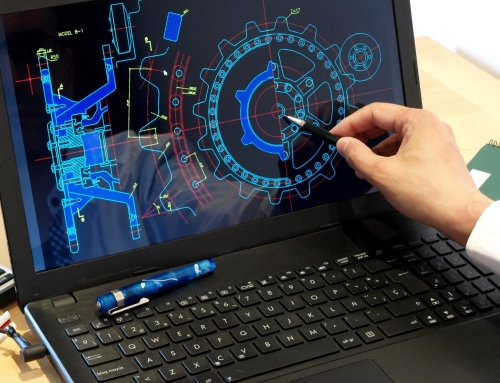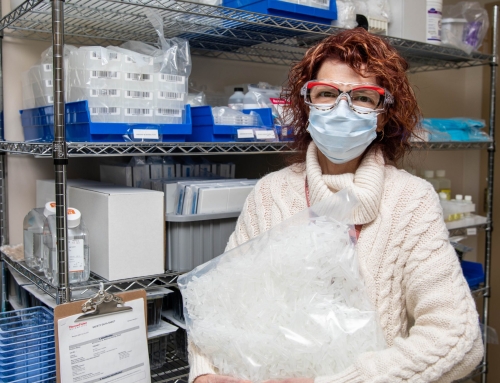Insert molding is a unique and versatile molding process that combines different components into a single, unified product. Insert injection molding is often considered a subtype of injection molding, an advanced manufacturing technique that has revolutionized how we produce plastic parts and components.
Importance of Insert Molding in the Manufacturing Industry
The insert molding process has gained immense popularity in the manufacturing industry due to its ability to create complex, multi-material components with exceptional strength, durability, and functionality. With plastic insert molding, manufacturers can eliminate the need for multiple production steps, such as assembly and bonding, saving time and resources. The versatility of the molding processes allows for the integration of various materials, resulting in products with enhanced performance and reduced overall weight.
Insert molding has proven to be a game-changer in various industries, including automotive, aerospace, medical, and consumer electronics, by enabling the production of intricate, high-quality components. The injection molding process has been continually refined and improved to accommodate the ever-evolving demands of modern manufacturing. As a result, plastic injection molding has become an indispensable tool in developing innovative, efficient, and sustainable products.
Basics of Insert Molding
Definition and Key Concepts
Insert molding is a specialized injection molding technique that integrates preformed components, such as metal or plastic parts, into a single molded product.
The insert molding process begins with placing the insert, which can include threaded inserts, electrical components, or metal reinforcements, into the injection mold. Molten plastic is then injected around the insert, encapsulating it and creating a unified, multi-material component.
Materials Used in Insert Molding
A variety of materials can be used in the insert molding process. For the insert components, metals like brass, stainless steel, and aluminum are common choices, while other materials such as ceramics and different types of plastics may also be employed.
When it comes to the plastic molding process, thermoplastic resins are the go-to option due to their excellent molding capabilities and wide range of properties. Examples of such resins include polypropylene, ABS, polycarbonate, and nylon, among others.
Advantages and Disadvantages
Insert molding offers numerous advantages over traditional assembly methods:
Reduced Assembly and Labor Costs
Combining multiple components into a single product eliminates the need for separate assembly processes, cutting down on labor and production expenses.
Enhanced Mechanical Properties
The bond between the insert and the plastic material is incredibly strong, providing improved structural integrity and durability.
Streamlined Manufacturing and Assembly Time
The insert molding process simplifies the production workflow, allowing for quicker turnaround times and higher productivity.
Design Flexibility
Insert injection molding enables the integration of various materials and components, offering various design possibilities.
However, there are also some disadvantages to consider:
Limited Material Compatibility
Not all materials are suitable for insert molding. It’s crucial to select compatible materials that can withstand the heat and pressure of the injection molding process.
Higher Initial Costs
The upfront costs of insert molding can be higher due to the need for specialized molds and equipment. However, these costs may be offset by savings in labor and assembly in the long run.
Complex Mold Designs
Designing and producing molds for overmolding insert molding can be more challenging than standard plastic injection molding, requiring more expertise.
Despite these challenges, the numerous benefits of insert molding make it an attractive option for producing complex, multi-material components, especially for applications requiring high-performance plastic parts and robust metal components.
Insert Molding Techniques
Manual Insert Molding
Manual insert molding is a technique where operators manually place the inserted component into the mold before the injection of molten plastic. This approach allows for greater control over the process and is well-suited for small-scale production runs or the creation of highly intricate molded parts.
However, manual insert molding can be labor-intensive, increasing labor costs and manufacturing costs. Additionally, the manual handling of components may introduce variability and inconsistency in the final product.
Automated Insert Molding
In contrast to manual insert molding, automated insert molding utilizes robotics and automation systems to place the inserted component into the mold. This technique offers several advantages, such as increased precision, consistency, and speed in the production process.
The use of automation reduces the risk of human error and minimizes labor costs, making it an ideal choice for large-scale manufacturing runs. Automated insert molding is commonly used in producing electronic devices and other applications where consistency and high-volume output are crucial.
Overmolding and Co-molding
Overmolding
Overmolding is a specialized insert molding technique that involves encapsulating a previously molded part with another layer of plastic material. In the overmolding process, the substrate parts are positioned within the mold, and a second material is then injected to form a single, unified product. This technique is ideal for creating soft-touch grips on tools, such as a knife blade, or adding protective layers to electronic components. Overmolding allows for the seamless integration of different materials, improving the final product’s overall performance, aesthetics, and durability.
Co-molding
Co-molding is another advanced insert molding technique that involves injecting two or more plastic materials into a single mold. Unlike overmolding, where a previously molded component is coated with a second material, co-molding creates a single component by merging different materials in the mold. Co-molding enables manufacturers to produce parts with varying material properties, such as stiffness, flexibility, or color, within a single plastic piece.
Both overmolding and co-molding techniques provide unique opportunities for producing parts that incorporate non-plastic parts, metal parts, or multiple plastic materials into a single, integrated product. These techniques offer design flexibility and can eliminate the need for additional secondary operations or assembly processes, reducing production time and costs.
Whether it’s enhancing the functionality of a product or improving its aesthetics, insert molding techniques like overmolding and co-molding continue to expand the possibilities of what can be achieved with plastic components.
Design Considerations for Insert Molding
Part Geometry and Material Selection
When designing a product for insert molding, it’s essential to consider the geometry and material of both the insert and the plastic component. The choice of materials will significantly impact the final product’s performance, durability, and appearance.
In most cases, the selected materials should be compatible with each other and able to withstand the heat and pressure of the injection molding process.
Additionally, the geometry of the preformed part and the molded component should be designed to ensure proper bonding and integration.
Insert Placement and Alignment
Proper insert placement and alignment are critical for the success of the insert molding process. Misaligned components can lead to poor bonding, resulting in a weakened or defective final product.
To ensure precise placement, it’s essential to design features within the mold that securely hold the insert in the correct position during the injection process. These features may include specialized cavities, channels, or pins within the mold corresponding to the insert’s shape.
Ensuring proper insert alignment enhances the final product’s structural integrity and helps streamline the production process and minimize defects.
Tool Design and Fabrication
The design and fabrication of the mold play a significant role in the insert molding process. A well-designed mold will accurately represent the desired geometry of the final product, ensuring that the plastic and insert materials bond correctly.
The mold should be designed to accommodate the different materials and the two-step process involved in insert molding while maintaining the integrity of the single finished product.
Several factors should be considered when designing the mold, such as the type of plastics being used, the dimensions of the insert and overmolded components, and the desired production volume. Advanced mold designs may include features such as cooling channels or ejection systems to improve the efficiency of the molding process and reduce cycle times.
By carefully considering part geometry, material selection, insert placement, and mold design, manufacturers can optimize the insert molding process and produce high-quality, integrated products.
These design considerations lead to several benefits, such as lower costs and increased design flexibility, and contribute to the successful production of complex, multi-material components for a wide range of applications.
Conclusion
Plastic insert molding has revolutionized the manufacturing industry by enabling the production of complex, multi-material components in a single, streamlined process.
This innovative approach to molding processes allows for the seamless integration of various materials, such as metal inserts and plastic parts, within a mold cavity to create a unified, high-performance product.
The ability to combine different materials, such as encapsulating a metal component with a protective plastic layer, has led to the development of advanced products across a wide range of industries, including medical devices, automotive, and consumer electronics. The resulting molded part not only exhibits enhanced mechanical properties but also combines the best attributes of each material into a single component.
Through careful design and engineering, insert molded products can be created with precise control over the bonding and integration of more than one material within a single unit. This capability allows manufacturers to produce complex parts that would be challenging or impossible to achieve through traditional assembly methods.
From the simplicity of a simple object to the intricacies of overmolded parts, insert molding continues to push the boundaries of what can be achieved in the world of manufacturing. By considering factors such as material compatibility, insert placement, and mold design, manufacturers can successfully create products that offer numerous benefits, including reduced size, improved functionality, and cost savings.
As the demand for advanced, multi-material components continues to grow, insert molding will undoubtedly play a vital role in shaping the future of manufacturing, enabling the creation of cutting-edge products for the most common applications and beyond.



